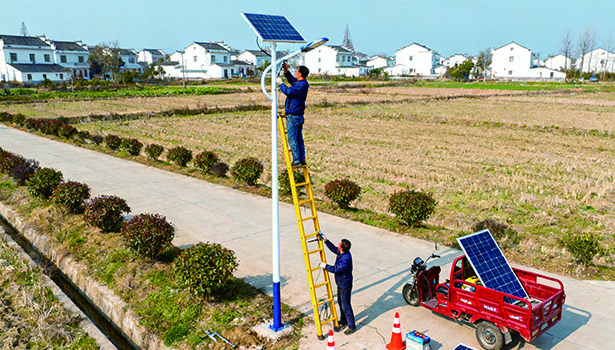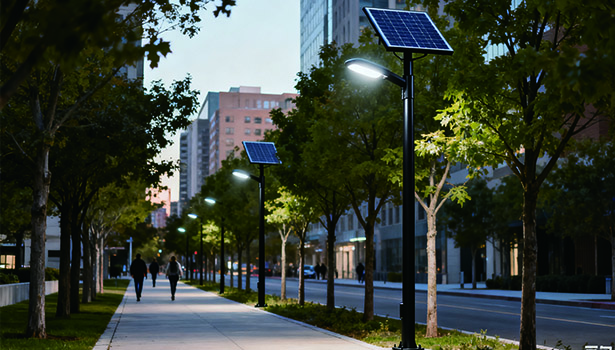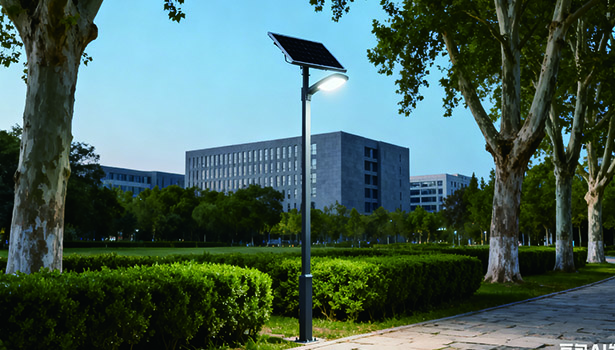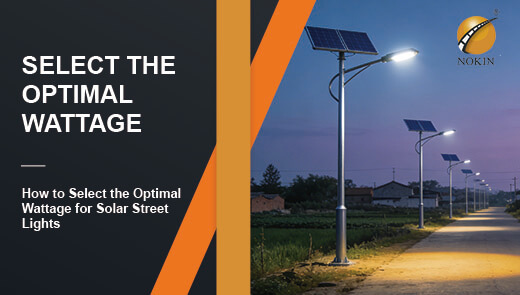How To Test The Durability And Performance Of Commercial Street Lights?
Commercial street lights are the core infrastructure in urban nighttime transportation and public safety systems. Its durability directly determines the long-term operation and maintenance cost, while its performance is related to the safety of road traffic and the quality of life of residents. Therefore, the establishment of a systematic testing process to comprehensively evaluate the durability and key performance indicators of commercial street lights is the core to ensure the stable operation of urban lighting systems.

Understanding the Importance of Testing Street Lights
Commercial street lights are exposed to complex outdoor environments for long periods of time, and need to withstand high temperatures, heavy rains, strong winds, sand and dust, as well as the wear and tear of components that are energized 24 hours a day. Lack of regular testing can lead to performance degradation or sudden failure, causing multiple problems.
From the safety point of view, the lack of brightness and flickering lights that are not detected in time will directly reduce the visibility of the road and increase the risk of accidents such as pedestrian falls and vehicle cuts. From a cost perspective, early detection of hidden problems through testing can avoid emergency repairs due to sudden damage to components, extend the overall service life of street lights, and reduce the frequency of replacement. From the compliance point of view, all countries have formulated clear standards for commercial street lights (such as China GB/T 31832-2015, EU ERP Directive), testing is a necessary prerequisite to ensure that the product meets the specifications and is put into use smoothly.
Core Performance Testing of Street Lights
Testing the Brightness of Street Lights
Brightness is the most basic performance indicator of street lights, which needs to meet the two core requirements of “intensity up to standard” and “uniform distribution” at the same time. The testing process needs to rely on professional tools and follow standardized distribution methods. The test tools mainly include illuminance meter and luminance meter, and the test should be carried out at night.
Specific steps are as follows: take the street light as the center, divide the grid by 10m×10m within its irradiation range, determine at least 5 test points (covering the center of the road, the roadside, the vertical point under the light and other key positions), and then use the illuminance meter to measure the illuminance value at a distance of 1.5m from the ground at each test point, and then finally compare the data with the local standards. For example, China's “Urban Road Lighting Design Standard” clearly requires that the average illuminance of the main road should not be less than 20 lux, and that of the secondary road should not be less than 15 lux. If the deviation of a certain test point is more than 10%, it is necessary to check whether the light source is aging or the angle of the lamps and lanterns is shifted, and to make timely adjustments and repairs.
Evaluating the Color Temperature of Street Lights
The color temperature determines the “warmth and coolness” of the light, which directly affects the visual experience of pedestrians and drivers, and the color temperature range should be selected according to the street light installation scene. A color temperature meter should be used for the test, and the distance between the instrument and the street light should be kept at 3-5m to avoid the interference of ambient light.
There are clear differences in the color temperature matching standards for different scenes: cold white light of 5000-6500K should be selected for urban main roads and highways, which has high clarity, improves the recognition of objects at a distance, and helps drivers to quickly judge the road conditions. residential areas and parks are suitable for warm white light of 3000-4000K, which is soft but not blinding, and creates comfortable nighttime environment and reduces visual fatigue of pedestrians.
Residential areas, parks and other areas are suitable for warm white light of 3000-4000K, which is soft and not harsh, can create a comfortable night environment and reduce visual fatigue of pedestrians. Special scenes such as tunnels and bridges require a neutral light of 4000-5000K, which balances clarity and comfort and avoids visual disparity when entering and exiting tunnels. If the color temperature deviation is found to be more than ±300K, it is necessary to further check whether the light source is damaged or the ballast is faulty, and replace the relevant parts in time.

Assessing the Energy Efficiency of Street Lights
In the context of the “double carbon” target, the energy efficiency of commercial street lights has become an important assessment indicator, which needs to be evaluated through the “power - light efficiency” linkage test. In the context of the “Double Carbon” target, energy efficiency of commercial street lights has become an important assessment indicator. The core evaluation index is luminous efficacy, the higher the value, the better the energy efficiency of the street light.
Different standard systems have different requirements for energy efficiency levels: China GB 30255-2013 categorizes LED street light energy efficiency into 3 levels, of which the luminous efficiency of the first level needs to be ≥130lm/W; the EU ERP directive is divided into A-G levels, and the luminous efficiency of the first level (A level) requires luminous efficiency ≥120lm/W. In addition to the basic energy efficiency test, the intelligent energy saving functions of the street light need to be checked, such as light-sensing dimming, time-dependent dimming, etc. The street light can be tested by the power meter and integrating sphere.
In addition to the basic energy efficiency test, it is also necessary to check whether the intelligent energy-saving functions of the street light, such as light-sensitive dimming and hourly dimming, are normal, for example, to test the function of automatically lowering the brightness by 30% after 23:00 at night, and to observe the precision of the brightness adjustment and the change of power consumption to ensure that the energy-saving function does not affect the basic lighting requirements.
Street Light Durability Test
The design life of commercial street lights is usually 5-8 years. The durability test needs to simulate a long-term outdoor environment to verify the wear and tear resistance of the structure and components to ensure stable operation during the whole life cycle.
Waterproof and Dust Proof Test
If water or dust accumulates in the street light body, it will lead to short circuit of the internal circuit and corrosion of the components, so it is necessary to verify the sealing by IP protection level test, and the commercial street light needs to reach IP65 and above to be considered as qualified. For the dust proof test, the streetlight should be put into a dust box and run continuously for 2 hours in a talcum powder environment with a concentration of 1kg/m³, and then disassembled and inspected at the end of the test, and there should be no obvious accumulation of dust inside the street light.
The waterproof test uses a nozzle with a diameter of 12.5mm to spray water in all directions (including the top, side and bottom interfaces) of the lamp body at a distance of 3m, with the pressure of the water flow maintained at 0.07MPa for 3 minutes, and after the test, it is necessary to ensure that there are no traces of water in the internal body of the lamp, and the electric circuit can be normally energized and operated.

High and Low Temperature Cycling Test
Different regions have large temperature differences between day and night and seasons, the low temperature in winter in the north can reach -30℃, and the high temperature in summer in the south exceeds 40℃, so it is necessary to test the operation stability of the street lamps under extreme temperatures. The test requires the use of a high and low temperature test chamber, and the process is divided into three stages: the low-temperature stage will reduce the temperature to - 20 ℃, so that the street lamps continue to run for 4 hours, to observe whether there is a start-up failure, a sudden drop in brightness or icing of components.
The high-temperature phase raises the temperature to 60°C and also runs continuously for 4 hours to check whether the streetlight shell is deformed and whether the temperature of the internal components exceeds 85°C (exceeding which may trigger the risk of burnout). Cycling test: Repeat the cycle of “low temperature - normal temperature - high temperature” for 5 times, with an interval of 1 hour between each cycle, to ensure that the performance of the street light does not deteriorate significantly after a drastic change in temperature.
Wind and Vibration Resistance Test
The pole and body of the street light should withstand strong wind and vibration from road vehicles to avoid collapse or loosening of parts, which may threaten the safety of pedestrians. Wind resistance test simulates 12-level wind (wind speed 32.7m/s) through wind tunnel test, fixing the pole on the test platform and blowing the wind continuously for 30 minutes, after which the bending degree of the pole is required to be no more than 1/1000 of the length of the pole, and there is no loosening or deformation of the connecting parts (e.g. interface between the lamp arm and the pole).
Anti-vibration test will be fixed on the vibration platform, simulating the vibration generated by highway vehicles (frequency 10-50Hz, amplitude 0.3mm), continuous operation for 2 hours, after the test, disassemble and check whether the internal lines are displaced, whether the screws are loose, to ensure the stability of the structure.
The performance and durability testing of commercial street lights is not only the front guarding of urban traffic safety at night, but also the scientific control of operation and maintenance costs, which is more in line with the energy efficiency requirements under the goal of “dual-carbon”. From the precise calibration of core performance such as brightness, color temperature and energy efficiency, to the severe test of durability such as waterproof and dust proof, high and low temperature resistance, wind and vibration resistance, each test link is escorting the stable operation of the street light throughout its life cycle.




